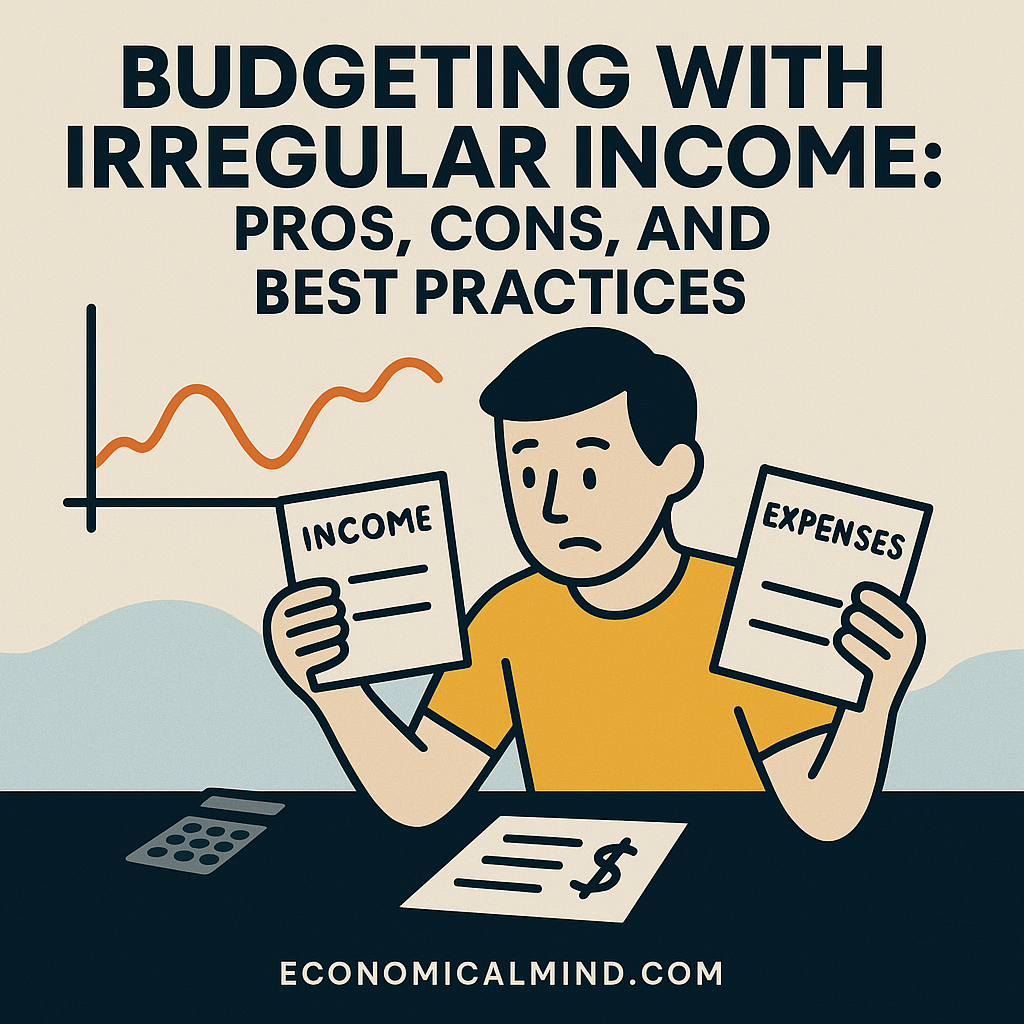
If your income fluctuates from month to month — like freelancers, gig workers, or commission earners — traditional budgeting can feel impossible. But an unpredictable paycheck doesn’t mean unpredictable finances. Here’s how to make a flexible budget that works even when your income isn’t steady.
Understanding Irregular Income
Irregular income means your pay varies, often based on projects, tips, commissions, or seasonal work. Unlike a salary, there’s no guaranteed monthly number — which makes planning more challenging but not impossible.
Pros of Budgeting with Irregular Income
1. Freedom and Flexibility
You can plan around your natural earning cycles and adjust spending dynamically.
Example: You can save more during busy seasons and relax spending rules when work slows.
2. Awareness of True Spending Habits
Because every dollar must be tracked carefully, you gain deeper insight into your real costs.
Example: You’ll spot wasteful spending faster since it impacts your low-income months.
3. Encourages Stronger Savings Habits
Irregular earners often become better savers out of necessity.
Example: Building a “buffer fund” becomes second nature to handle lean months.
Cons of Budgeting with Irregular Income
1. Harder to Predict Cash Flow
Without a stable paycheck, timing bills and expenses can be stressful.
Fix: Automate minimum bill payments and keep one month’s expenses in a holding account.
2. Risk of Overspending in Good Months
Big paychecks can create a false sense of financial security.
Fix: Treat every month like an average-income month — save extra instead of inflating lifestyle costs.
3. Emotional Stress
Uncertainty about income can cause anxiety, especially with family or rent obligations.
Fix: Focus on what you can control — expenses, savings, and tracking — rather than unpredictable income.
Best Practices for Budgeting with Irregular Income
1. Find Your Average Monthly Income
Look at the past 6–12 months and calculate your monthly average. Use that as your “baseline” for planning.
2. Separate Business and Personal Accounts
Mixing accounts makes budgeting nearly impossible. Keep earnings and spending separate for clarity and taxes.
3. Build a Buffer Fund
Create a savings cushion specifically for slow months — ideally one to two months of expenses.
4. Prioritize Fixed Expenses
Rent, insurance, and utilities come first. Build your budget around the essentials, not extras.
5. Use the “Zero-Based Budget” Method
Assign every dollar a job — even variable ones. This keeps you intentional with spending and savings.
6. Pay Yourself a Set “Salary”
Transfer a consistent amount to your personal account each month from your business income, even if you earn more.
7. Track Every Expense
Use an app or spreadsheet to monitor where money goes — irregular earners can’t afford to guess.
8. Save During High-Income Months
When work is strong, automatically move surplus money into savings before lifestyle inflation kicks in.
9. Review Monthly and Adjust
Budgets for irregular income must be flexible. Review each month’s results and refine for next month.
10. Don’t Forget Taxes
Set aside money for quarterly taxes if self-employed. Irregular earners are often hit hardest by surprise tax bills.
Key Takeaway
Budgeting with irregular income requires structure, flexibility, and foresight. When done right, it gives you the best of both worlds — freedom and control — without the financial chaos.
